A personal, idiosyncratic trip to our only natural satellite
A
Apollo Missions, Apollo, Art
The Apollo missions of the sixties sought to conquer one of the enduring mysteries of our skies. And of our closet celestial ally – the moon. But, of course, despite the evidence from those days of a few lonely footprints on its ancient lunar service, it will always remain inscrutably moonish, always unconquerable. During those brief heady moments humankind were merely allowed a pass.
It is no more conquerable than the Greek god whose name inspired those heroic missions into the vast unknown – the bisexual Apollo, god of practically everything – not just the sun, that was also Helios.
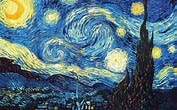
It is no more mysterious than the art of Van Gogh whose painting, The Starry Night, was partly inspired by its eminent lunar presence. Following the self-mutilation of his ear, Van Gogh admitted himself to Saint-Paul-de-Mausole lunatic asylum where he painted the picture. His stylised representation of the moon and the village under it's eerie luminosity is, perhaps a recognition of his own subjugation to the lunar effect and its ancient purported connection with lunacy.
B
Bedtime stories of Margaret Wise Brown
In 1947 the children's classic book, 'Goodnight Moon' by Margaret Wise Brown, was published. On her death in 1952 she bequeathed her considerable royalties to Albert Clarke, the son of a neighbour who was nine at the time of her death. According to The Wall Street Journal, Albert Clarke was a troubled soul who led a turbulent life, always believing the author to be his mother. This assertion was refuted by Brown's closest friends. The millions of dollars that her books earned him, Clarke managed to squander within a few days, leaving his virtually penniless.
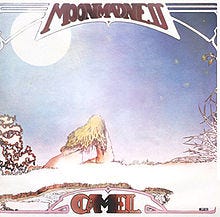
C
Camel-moon madness
The English progressive rock band, Camel, released their fourth album, 'Moonmadness,' in 1976. It was voted number 58 in the Top 100 prog albums of all time by readers of Prog Magazine in 2014. Its enduring quality was demonstrated again in 2018 when Camel performed the album once more in its entirety. The album was inspired by the old idea that madness proliferates during the full moon. It closes with a track called lunar sea, the crowning achievement of the album. The track has been described as a space-jazz rock bonanza, written by band member, Andy Ward. The play on words has an ironic and tragic legacy. A few years later, Ward lost his position in the band after being diagnosed with a bi-polar disorder.
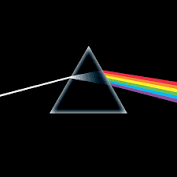
D
Dark Side of Moon by Pink Floyd
Pink Floyd's 'Dark Side of the Moon' brought more lunar representation into the orbit of prog rock come mainstream popular music. With the release of this monumental album in 1973, Pink Floyd shrugged off the shackles of its underground pedigree as well as the dark shadow of its founder member, Syd Barrett, who had left the band in 1968 after succumbing to LSD induced psychosis. The album is full of allusions to madness, alienation and Syd Barrett (so he was never shrugged off from their memory, only musically speaking)–
And if the band you're in start playing different tunes/I'll see you on the dark side of the moon.
A year before its release it was performed in the presence of an assembled press to critical acclaim. At the point the piece was known as Dark Side of the Moon: A Piece for Assorted Lunatics.
As well as using advanced (for the time) recording techniques such as multi track recording and tape loops,the album was sprinkled with snippets of interviews with the road crew –
I've been mad for fucking years, absolutely years
and
there is no dark side of the moon, as a matter of fact it's all dark.
With sounds from the environment and the use of the human voice the album is rich with examples of musique concrete.
The iconic sleeve was designed by the legendary Storm Thorgerson, depicting a prism spectrum. In the seventies it was the poster to have on your bedroom wall along with the obligatory Che Guevara. The album remained in the charts for 741 weeks, from 1973 to 1988, re-entering in 2009 and so clocking up a total of over 900 weeks. This has translated into sales of over 45 million.
As an interesting side bar concerning Pink Floyd during the BBC coverage of the first Apollo moon landings, the band played in the studio for the duration, improvising some suitably spacey music as a soundtrack to Armstrong's
…giant leap for mankind
That was the BBC for you in their heady psychedelic days, before they decried anymore of that hippy druggy nonsense.
E
Eclipse
Sorry, we're not done with Pink Floyd. The final track on the Pink Floyd album is called Eclipse. In 2004 the song was used to wake the Mars probe 'Opportunity.' It was also used at the finale of the 2012 summer Olympics opening ceremony in London. The track ends with the lyrics:
And every thing under the sun is in tune/but the sun is eclipsed by the moon.
The song perhaps alludes to the human struggle between the moral and emotional forces of light and dark. Alternatively it could represent the end of all conflicts, when everything stops, even the heartbeat, and death and darkness descend. Well, what do you expect from a Roger Waters lyric, something light and breezy? Well, compared to what was to come, this was probably it.

F
Film
The Moon has been depicted in many movies. More recently in 'Moon' (2009), but also in the most iconic of space films, Stanley Kubrick's , A Space Odyssey.' In the movie, based on a story by Arthur C Clarke, a monolith is discovered on the Moon. It is the same monolith discovered earlier in the movie by a tribe of prehistoric apemen before an evolutionary leap. The monolith delivers a high pitched radio signal from the Moon to the planet Jupiter. According to Clarke the monolith is a tool created by an alien race, evolved from organic form to a state of pure energy. They travel the cosmos in order to assist less advanced species to take evolutionary steps. In the concluding section of the movie, the astronaut, Bowman, is placed in a type of human zoo to be observed by the alien species through the ages of human life, before being recreated as the 'star child,' returning to Earth to facilitate the next evolutionary step for humankind.
G
Gravity
The gravity of the moon, being much less than on Earth, means that things on the Moon weigh only 16.6% of what they would be on Earth. It is the Moon's gravitational pull that impacts the Earth's tidal patterns and may also affect the movement of some plant's leaves. They could be a correlation between the movement of the water within leaves and the lunisolar tide cycles.
The moon's gravitational pull slows down the Earth's rotation, known as tide breaking. According to a recent study it slows down at a rate of 2.3 milliseconds every century. 1.4 billion years ago the moon was closer to the Earth, and a day was roughly only 18 hours.
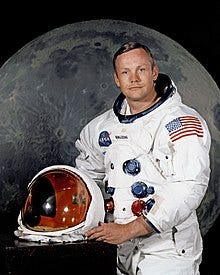
H
Human Presence
Over the years the Moon hasn't seen an awful lot of us. In terms of footprints on the surface there have been a total of twelve. Twelve Moon disciples, in order of appearance:
Neil Armstrong
Buzz Aldrin
Pete Conrad
Alan Bean
Alan Shepard
Edgar Mitchell
David Scott
James Irwin
John Young
Charles Duke
Eugene Cernan
Harrison H Schmitt
I
The Impactor that Formed the Moon and its Core
Although many theories exist regarding the Moon's creation, recent evidence suggests that it may have been created 95 million years ago (give or take) due to a monstrous collision with our proto-Earth. The impactor, named Theia, roughly the size of Mars, ripped out a giant piece of our molten future home, flinging it into space. It were these raw ingredients torn from the Earth that fell into our orbit and there you have it – The Moon.
The Moon has a relatively small core of about 420 miles wide, and is likely to consist mostly of iron.
J
John F Kennedy
President John F Kennedy first threw down the gauntlet in his historic speech in 1961. He committed the USA to becoming the first to put a man on the moon by the end of the decade. It was probably more politics than science. It was during the height of the Cold War and the Soviets were already ahead on embarking on a moon exploration programme. Beating them to it, to stick the Stars and Stripes on the cold lunar surface before the Hammer and Sickle, was a big deal. And one in the eye to those pesky Reds.

K
Keith Moon
Here on Earth there is only one Moon and his other name was Keith, drummer of The Who. In the world of rock music, (and what other world is there?) he is one of the greats. In a Rolling Stone readers poll of 2011 he was voted the second greatest drummer of all time – just behind Led Zeppelin's Jon Bonham.
However his unconventional drumming style sometimes frustrated his bandmates as the speed of his playing was sometimes dependent on his mood. He was also known for his destructive behaviour, routinely trashing hotel rooms and blowing up his drum kit. His wild behaviour gave him the nickname Moon the Loon.
Despite his prowess behind the drum kit, Moon was a troubled soul who struggled with alcohol addiction. He died at the tragic age of 31 following an overdose of Heminevrin (Clomethiazole), a sedative prescribed to relieve some of the symptoms of alcohol withdrawal. It can be lethal when mixed with alcohol, and is, therefore, not recommended unless under strict supervision. Although he was prescribed a maximum of three tablets daily, at the time of his death a total of 32 was found in his system.
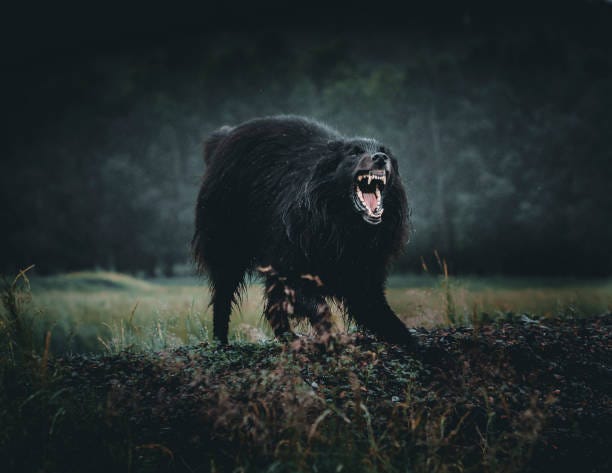
L
Luna and Lycanthropy
Luna is the Latin name for moon. The Roman goddess, Luna, was the personification of the Moon. With the full moon said to be responsible for displays of madness, Luna is where the term lunatic and lunacy are derived from.
Lycanthropy- I see a bad moon arising. Or a werewolf transforming under a full moon. And the werewolf may even be an American in London.

M
Man in/on the Moon
Throughout time we have looked up at the moon when it is full and round and, due to the shadows and roughness of its surface, imagined there to be human face looking down on us. This is an example of a phenomenon known a pareidolia, when we see something familiar in a random, unrelated object. According to European tradition the unfortunate man was punished by God, in a moment of unforgivingness, for gathering sticks on the Sabbath, which seems a perfectly reasonably punishment to me. Other stories name him as Cain, the wanderer, doomed to circle the Earth for the crime of murdering his brother (fratricide).
In Norse mythology Mani. (meaning moon) is the male personification of the Moon. He is forever crossing the sky in a horse drawn carriage pursued by the Great Wolf, Hati, who finally catches him at Ragnatok, the scene of a great battle where a number of high ranking Norse gods are killed.
'Man on the Moon' was also a song by REM from their hugely successful album, 'Automatic for the People.' It was their eighth studio album, released in 1992 and sold a not too shabby 18 million copies worldwide.
N
National Aeronautics and Space Administration
NASA was founded by the US in 1958 for the advancement of space science. It emphasises a civilian (as opposed to military) orientation and a peaceful application to its endeavours. As well as its later space exploration projects such as the Skylab space station and the space shuttle, NASA was responsible for the Apollo Moon Landing Missions of the sixties and early seventies.
O
Orbit of the Moon
The Moon makes a complete orbit of the Earth every 27.3 days. As it does so, the Sun reflects its light on the Moon's surface from different angles, so it appears the Moon is changing shape: the phases of the Moon.
From one full Moon to the next takes 29.5 days. The difference of just over two days more than its orbit of the Earth is due to the Earth moving round the Sun, the Moon has to rotate slightly more to return to its same position.
P
Phases of the Moon
The Moon always shows the Earth the same face. The phases of the Moon are determined by the relative positioning of the Earth, Moon and Sun. There are eight major phases of the Moon.
New Moon: the back side of the Moon is lit up by the Sun, so the side of the moon facing us is in darkness.
Waxing Crescent
First Quarter
Waxing Gibbous
Full Moon: near side of the Moon is fully lit by the Sun.
Waning Gibbous
Last Quarter
Waning Crescent
In Hindu mythology the moon god, Chandra, is cursed by Daksha, a Prajapati who was one of the original fathers, created by Brahma to go forth and multiply. Chandra married 27 of Daksha's daughters but only favoured one of them, the beautiful Rohini. Daksha was so enraged by this favouritism that he cursed Chandra with a terrible disease that made the Moon god grow weaker and wither. Sweet, vain Chandra was very proud of his full, radiant body that looked down upon Earth. In a panic he sought the help of Shiva who kept the sacred plant, soma, in his long hair. This plant had great powers of rejuvenation. Each time Chandra began to wane and die, he rushed back to Shiva for more soma. Eventually Shiva suggested that rather than all this unbecoming and going, Chandra should take up permanent residence in his long tangle of locks so whenever he was afflicted by the disease he could take his fill of soma and slowly become round and full again. And so this is where the Moon-god, Chandra, resides – in the top knot of the great god Shiva's hair, living out the phases of his life, death and rebirth.
Q
Q -Anon
Lunacy. Nuff said.
R
Moon River
Moon River is a song by Henry Mancini, lyrics by Johnny Mercer. Originally performed by Audrey Hepburn in the movie Breakfast at Tiffany's (1961), it won an Oscar for the Best Original Song. The following year it also won Grammy Awards for Record of the Year and Song of the Year. Since then it has been covered by many different artists.
S
Satellite
The Moon is Earth's only natural, permanent satellite. It is the fifth largest satellite in the Solar System and the largest among the planetary satellites relative to the size of the planet it orbits.

T
Moon Tarot Card
In the tarot deck the Moon card is number eighteen of the Major Arcana. It represents the life of the imagination. The shadow divinatory associations include: deception, darkness, hidden enemies, occult forces, error, feelings of madness to name a few. Nothing to worry about there then.
However, on a slightly more positive note, according to tarot lore the Moon can bestow her shadow gifts. The Moon's essence is reflection. It is a cold light but by it we are able to see our shadow. It allows us to be more of a right brainer, solutions may be more intuitive rather than logical, so we are guided more by our intuition. We can be more open to information from dreams, trust more in our feelings and recognise and celebrate the mysteries of our life as well as the changes and cycles within it.
So, I would suggest, a little moon magic goes a long way. Measure it out in coffee spoons as TS Eliot did with his life, or maybe it was Alfred Prufrock, after all. It was always that bloody snickering, eternal Footman that did it for me as the Moon's more sinister shadow.
U

Universe
Well, we're all in the universe somewhere and, in not very scientific language, the Moon and the Earth are tied together by the Universe. I guess it's the Solar System first, then pull out further, much further, and we're in the Galaxy and then, further out still, the Universe. But the Universe is too vast for me to comprehend – so I won't. Instead I'l give a brief fanfare for Across the Universe by The Beatles.
The song was written by John Lennon but as always credited to Lennon-McCartney. It appeared on a charity album compilation called 'No one's Gonna Change Our World.' It was then recorded again in a different form for The Beatles 1970 album 'Let It Be.' Although the album was the last to be released by the group it wasn't the last to be recorded. That honour goes to 'Abbey Road.' This is a pleasing fact. Because although there are undoubtedly a few stand-out tracks on 'Let It Be,' 'Abbey Road' is a far more coherent album without any turkeys strutting around. It is arguably their finest hour.
And yes, one of the stand out tracks off 'Let It Be' is certainly 'Across the Universe.'
Words are flowing out like endless rain into a paper cup…
This was inspired by frustrations of listening to the voice of his first wife during a fractious period. The romantic fool. The Chorus:
Nothings Gonna Change My World
is preceded by a Hindu mantra reflecting their interest in transcendental meditation
Jai guru deva om
The melody is simple but effective, and the whole effort is enormously beguiling and poetic.
So that sums up the Universe.
S
Saturn V
Saturn V is the heaviest, tallest and most powerful rocket ever to be brought into successful operation. The rocket was used by NASA from 1967 to 1973 and was the rocket support for thr Apollo moon explorations. The rocket has three stages of propulsion each fuelled by liquid propellants. It was launched 13 times from Kennedy Space Centre with no loss of crew on any of its operations.
W
The Moon Wobble
Yes, every few years the Moon has a wobble. The Moon Wobble describes fluctutations in the Moon's orbit. The wobbles are a result of changes in the Moon's elliptical orbit and the resulting gravatational pull on the Earth. The changes are a consequence of the Moon's natural 18.6 year cycle. The first half of the cycle is the one with suppressed daily tides and the other half of the cycle unleashes far greater tide levels. As we are currently in the latter half of the cycle this partially explains the increases in global flooding. The other part of the explanation is the rising sea levels caused by climate change. The next half of this cycle is the mid 2030s and due to the predicted further rises in sea levels we can look forward to even greater levels of destruction along the world's coastal areas.
X
X marks the spot
X marks the spot… where they landed… on the Moon. Okay? Yep. I'm getting desperate and the hour is late. Besides this is my A to Z. And who cares about X anyway?
Y
Yellow Moon and You
Yellow Moon, often occurring in June, and also known as Honey Moon, is when the Sun is highest in the sky in the Northern Hemisphere and the Moon is lowest. The Moon is seen through a thick atmosphere which turns it red or yellow, similar to a setting Sun.
You can fly to the moon too — if you're Jeff Bezos.
Z
Zeus
Zeus, one of the most notorious sexual predators in the Greek Pantheon (Harvey Weinstein has nothing on him but it seems like he may have been a wannabe of that particular Pantheon), was said to have a moment or two with Selene, the beautiful goddess of the Moon (the Greek one). The goddess bore Zeus a daughter, Pandia ('all brightness') who, according to Homer was 'exceedingly lovely amongst the deathless gods' (maybe the old rascal, Homer, wasn't so blind), as well as, reputedly, a second daughter, Ersa ('dew').
That's all folks. Is there anyone still out there? Time to go and look out at the Moon and emit the odd little howl. Gotta think of the neighbours.
If you enjoyed this story and would like to read more, please sign up for my weekly newsletter
If you wish to sign to Medium click here
